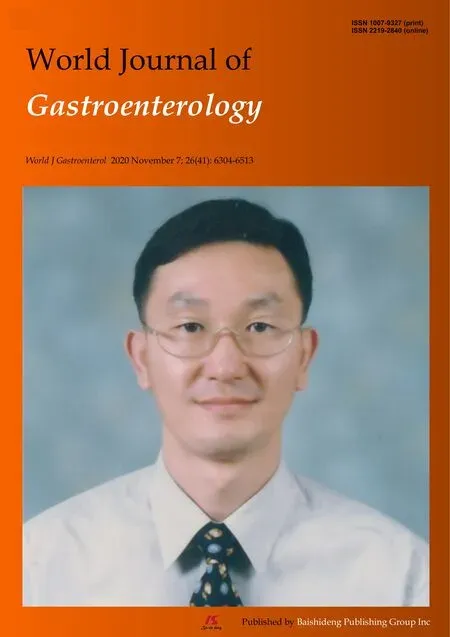Comment on “Updated meta-analysis of pancreatic stent placement in preventing post-endoscopic retrograde cholangiopancreatography pancreatitis”
Jiang-Tao Chu
Abstract I read with interest an article “Updated meta-analysis of pancreatic stent placement in preventing post-endoscopic retrograde cholangiopancreatography pancreatitis” by Fan and colleagues in World J Gastroenterol 2015; 21(24): 7577-7583. Although I appreciate their work, I have found problems with the data extracted and analyzed by the authors, and will give my comment in this letter. It would be valuable if the authors could provide an accurate estimation of their extracted data.
Key Words: Meta-analysis; Pancreatic stent; Post-endoscopic retrograde cholangiopancreatography; Pancreatitis
TO THE EDITOR
I read with interest the article “Updated meta-analysis of pancreatic stent placement in preventing post-endoscopic retrograde cholangiopancreatography pancreatitis” by Fanet al[1]. In this study, the authors performed an updated meta-analysis to evaluate the prophylactic effect of pancreatic duct (PD) stents in post-endoscopic pancreatitis (PEP). This is a significant study. However, after reading the article carefully, I found some worthwhile issues which I would like to discuss with the authors.
First, in the meta-analysis, the authors finally included 15 randomized controlled trials. Two of the 15 studies were labeled with the same reference, but the extracted data were different (Figure 1). This makes me doubt the accuracy of the data. I retrieved published clinical trials on prophylactic PD stents to prevent PEP from MEDLINE (between 1980 and May 2013), EMBASE (between 1980 and May 2013), and the Cochrane clinical trial databases. As a result, I have found that the data underlined in green do not exist. Therefore, I concluded that there were errors in the extracted data.
Second, in their study, the initial extracted data were inconsistent with the later data in the meta-analysis (Figure 2). The reason was not mentioned by the authors. Smithlineet al[2]reported in 1993 a total of 98 alternately randomized patients: 50 to the no-stent group and 48 to the stent group. Stent placement was unsuccessful in 5 patients. If the number of patients who underwent treatment was used as the result in the meta-analysis, the total number of patients in the stent group should be 48. However, if the number of patients who were successfully treated was used as the result, the total number of patients in the stent group should be 43. In the metaanalysis, the authors did not describe the analysis method used.
In the study by Thanaskyet al[3]in 1998, 80 patients were randomized to the stent (n= 41) or no stent groups (n= 39). One patient had mild pancreatitis in the stent group, another 2 patients in the stent group developed mild pancreatitis after stent extraction. So, the total number of patients in the stent group should be 41, and the number of event patients in the stent group should be 3.
In the study by Fazelet al[4]in 2003, two patients randomized to the PD stent group were excluded. If the intent-to-treat analysis was included, the total number of stents would be 40, and the number of event patients would be 2; the total number of people in the control group should be 36, and the number of event patients should be 7. But the authors did not state which analysis method was used.
In summary, we admire the efforts by the authors to clarify the role of pancreatic stent placement in preventing post-endoscopic retrograde cholangiopancreatography pancreatitis. Nevertheless, it would be valuable if the authors could provide an accurate estimation of the extracted data to address my questions.

Figure 1 Characteristics of the included studies, as reported by Fan et al[1]. The two underlined studies are labeled with the same reference, but the extracted data differ. Citation of the Figure: Tarnasky PR, Palesch YY, Cunningham JT, Mauldin PD, Cotton PB, Hawes RH. Pancreatic stenting prevents pancreatitis after biliary sphincterotomy in patients with sphincter of Oddi dysfunction. Gastroenterology 1998; 115: 1518-1524.

Figure 2 The highlighted data show inconsistent characteristics in the Table 1 describing the included studies and the meta-analysis in the Figure 2A. A: Characteristics of the included studies. B: The meta-analysis.
 World Journal of Gastroenterology2020年41期
World Journal of Gastroenterology2020年41期
- World Journal of Gastroenterology的其它文章
- Associations of content and gene polymorphism of macrophage inhibitory factor-1 and chronic hepatitis C virus infection
- Focus on gastroesophageal reflux disease in patients with cystic fibrosis
- Efficacy and safety of non-pharmacological interventions for irritable bowel syndrome in adults
- Endoscopic gastric fenestration of debriding pancreatic walled-off necrosis: A pilot study
- Older age, longer procedures and tandem endoscopic-ultrasound as risk factors for post-endoscopic retrograde cholangiopancreatography bacteremia
- Escalating complexity of endoscopic retrograde cholangiopancreatography over the last decade with increasing reliance on advanced cannulation techniques
